"That which you create in beauty and goodness and truth lives on for all time to come." -Denis Waitley
It's been another spectacular week here in the Universe, and I'm pleased to take on another one of your wonderful questions in yet another Ask Ethan column! (Keep sending in your questions and suggestions if you have them.) This week's question comes from Robert Scott, and it's one of the simplest yet also the most puzzling:
I love looking at the beautiful long-exposure pictures of the Milky Way on the internet. I also love pictures of galaxies. One of my favorites is of Andromeda. I've read somewhere that it is quite large in the sky, but its arms are dim.
Here's the question: why do I NEVER see the Andromeda galaxy in long-exposure Milky Way pictures?
Here's what he's talking about.
By taking a large number of long-exposure images of the night sky, either with a very large-aperture lens or an incredibly sensitive CCD-array camera (or both), you can get a good sampling of a very large section of the night sky, which you can then stitch together into a panoramic composite. The result is a beautiful, deep-sky exposure image of the sky, often including the Milky Way as a major target.
On the other hand, there's the Andromeda Galaxy, even larger than the Milky Way and our closest major galactic neighbor at a distance of just over 2 million light-years from us.
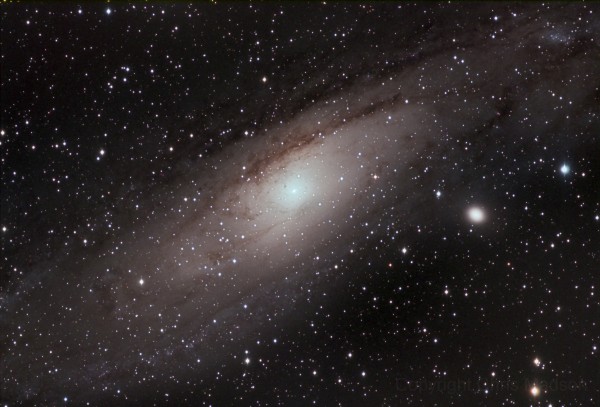 Image credit: Christopher Madson, user mads0100 of astrobin, via http://www.astrobin.com/54638/.
Image credit: Christopher Madson, user mads0100 of astrobin, via http://www.astrobin.com/54638/.
This galaxy actually takes up a relatively large section of our night sky, as it appears maybe four-to-six times the size of the full Moon with your naked eye, depending on how much or how little light pollution there is in your skies when you see it.
Yet, despite being relatively close to the plane of the Milky Way in the night sky, you're very unlikely to see it in the same photograph as a Milky Way panorama. You're far more likely, in fact, to see two other galaxies that are much smaller and less significant!
On the left of this image, you might notice the large and small Magellanic clouds, respectively. Despite being much smaller than Andromeda (containing only a few percent the number of stars), these two objects actually appear larger in the night sky (from the Southern Hemisphere) due to the fact that they're only about 170,000 light years away!
They're also displaced a little bit more than Andromeda is from our galactic plane, making them easier to view, not harder. You see, the way our eyes work, even something that's brighter is more likely to be lost by our eyes against a more luminous background; contrast plays a big role in what we perceive.
You'll very easily notice the large Magellanic cloud at the lower right of this image of the Milky Way, but do you notice a much smaller, fainter "smear" at the lower left of the Milky Way?
Barely, right?
That's Andromeda.
 Image credit: Wally Pacholka, via http://www.astropics.com/Big-Dipper-Andromeda-Galaxy-Milky-Way-Galactic….
Image credit: Wally Pacholka, via http://www.astropics.com/Big-Dipper-Andromeda-Galaxy-Milky-Way-Galactic….
But when you see a whole-sky panorama like this, the quest for Andromeda is really like looking for a needle in the haystack of the bright night sky. Yes, you might be able to find it, but only if you know exactly what you're looking for!
Despite being around three degrees across on the night sky, that's only maybe 1-2% of a typical panoramic image, or the amount you'd see if you held up the white part of your pinkie finger's nail at arm's length. That's the scale of the Andromeda galaxy you're looking for.
Yet it's very muck there, visible on the very left edge of this image. The fact that it's so close to the Milky Way actually works against our eyes, but this will turn out to be a boon in the far future.
You see, Andromeda and the Milky Way are getting closer, and as the billions of years tick by, it will become far more prominent in our night sky!
Today, unfortunately, all we have is the upper-left-corner panel: what Andromeda looks like today.
It's beautiful, and it's real, but it's sadly quite tiny against the vast expanse of our galaxy, which is why it looks so much better when the Milky Way is cropped.
Astrophotographers can take great care to bring out both the detail in a section of the Milky Way and also highlight the Andromeda galaxy, and compositions designed to do just that can be utterly spectacular. This is especially true because Andromeda happens to be located extremely close (in angular proximity) to the North American Nebula in the night sky!
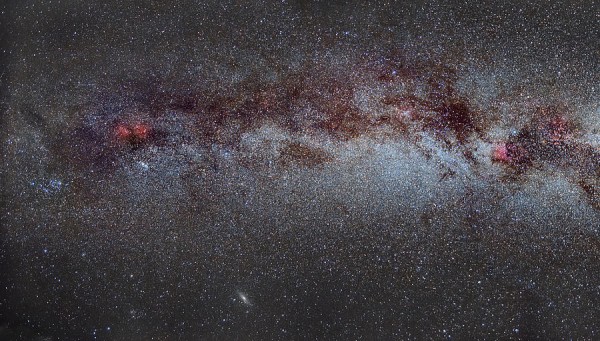 Image credit: Guido Montanes Castillo of http://fineartamerica.com/featured/north-america-nebula-the-milky-way-f….
Image credit: Guido Montanes Castillo of http://fineartamerica.com/featured/north-america-nebula-the-milky-way-f….
The lesson is, if you know where to look in panoramas, you can often find Andromeda hiding in large panoramas of the night sky, but it takes a lot of experience to know where that location is. (See the lower right, below.)
Either that, or you'll want a tremendously large and high-resolution image, and then you can hunt for a spectacular view of Andromeda at your leisure. Because it doesn't change in the night sky, the best full-scale panorama I've found is actually from some 30 years ago, and I'm happy to share it with you here!
 Image credit: ESO, via http://www.eso.org/public/images/milkyway-photographic/.
Image credit: ESO, via http://www.eso.org/public/images/milkyway-photographic/.
And if you were able to find it, on the right just about one screen up from the bottom, you've learned how to find Andromeda in-or-near panoramas of the Milky Way!
Thanks for joining me for another Ask Ethan; I'm still working with ScienceBlogs on some of the details I was hoping to have hashed out last week, but I'll keep you posted. In the meantime, enjoy the wonders of the Universe, and I'll see you over at Medium the rest of the days!

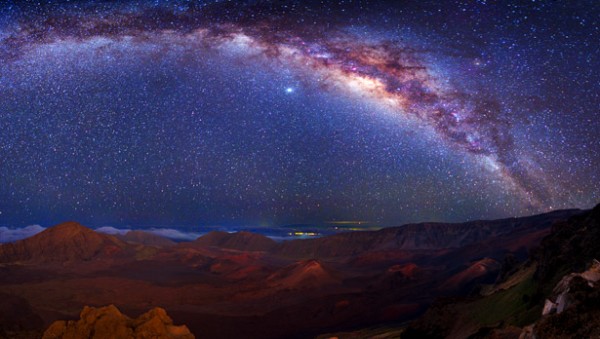
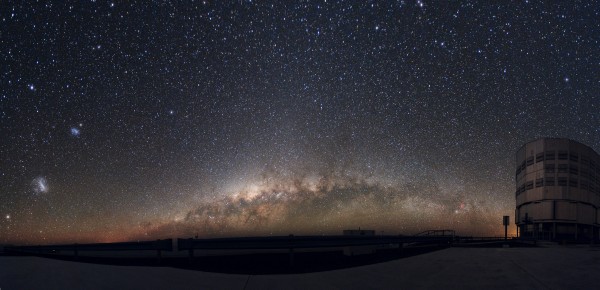

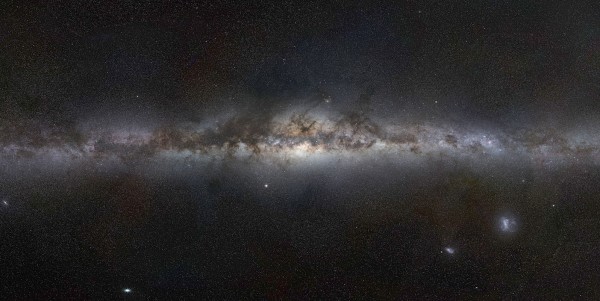
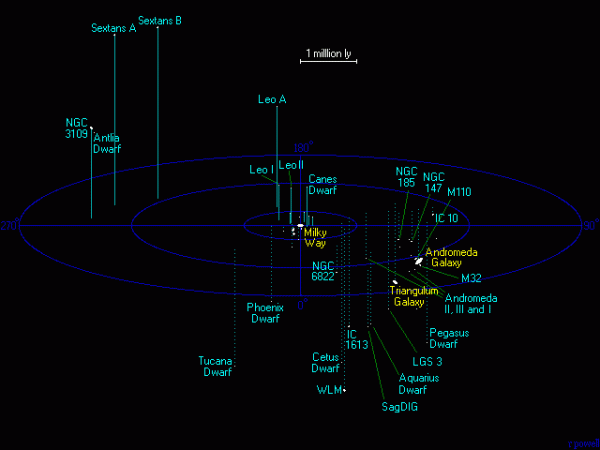
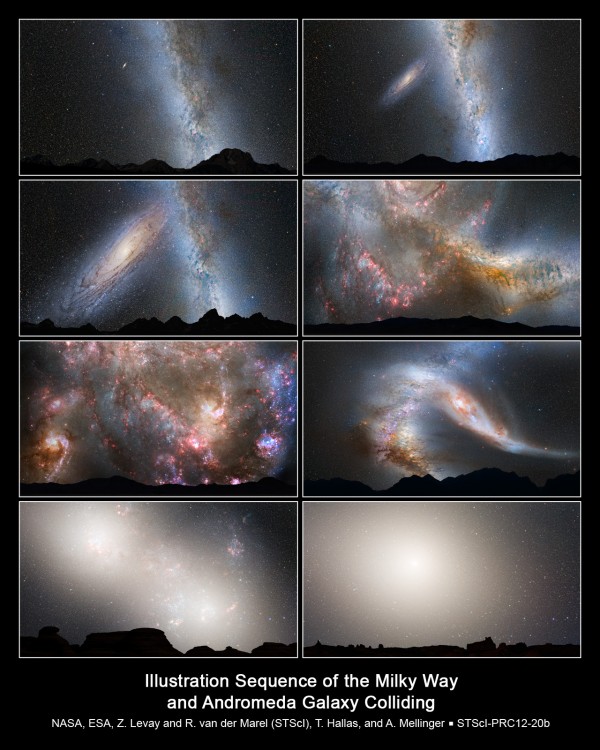
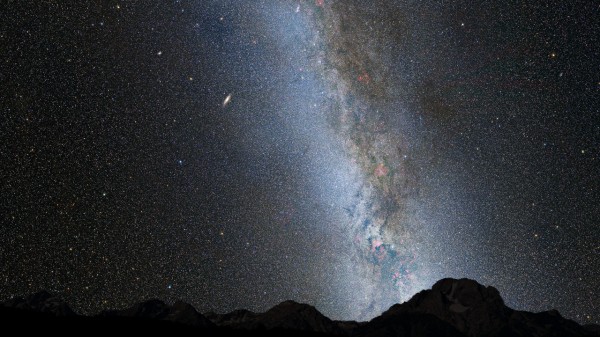
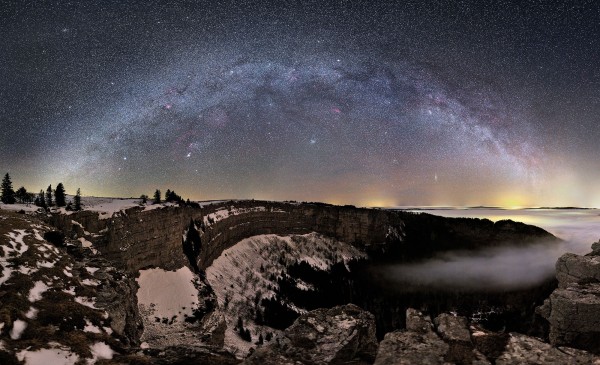
Ethan,
Thank you for answering my question re "the missing Andromeda Galaxy". Explained a minor mystery I have wondered about for years. And the pictures were outstanding. I also enjoyed your artwork on the "Andromeda-Milky Way collision". Love your ScienceBlog. Great stuff!
Robert Scott
Thank you for sharing superb information. Your site is very cool. I’m impressed by the details that you have on this website. It reveals how nicely you perceive this subject. Bookmarked this website page, will come back for extra articles. You, my friend, ROCK! I found just the info I already searched everywhere and just couldn't come across. What a great web site.
Ethan,
Thanks for the great explanation, as always! One point I'd like to bring up: I was recently hanging out with the fine fellows at the Raleigh Astronomy Club here in NC (http://www.raleighastro.org/) and I asked people's opinions on the whole "How Andromeda will look in a couple million years" situation. In my head, I had an idea similar to that at which you hinted in this post: that as Andromeda and we moved closer to each other, it would appear larger and more brilliant in the night sky, culminating in a gorgeous period in which we will see this beautiful spiral galaxy take up much of the night sky.
However, when I asked the fine fellows at the club, many were quick to pop my bubble. Essentially, they pointed out, as the galaxy moves closer to us, it will be come more diffuse and less concentrated, so it will become LESS spectacular leading up to the great merging.
Your thoughts on this?
Mike,
It's kind of interesting if you do the math, because what you find is that an object that's twice as far away is going to appear four times as concentrated in the sky, but also one-fourth as bright! This basically means that as Andromeda gets closer, its brightness won't appear to increase, but it will be visible over a greater and greater part of the sky.
Eventually, it will appear much as the plane of the Milky Way does to us: large and spectacular, but also diffuse, and requiring dark skies to see. But what you do see will be huge and magnificent.
What you consider spectacular is subjective, of course, but what the future holds would be more spectacular to me than what we currently have. (And I've seen Andromeda with my naked eye only twice.)
Regarding the imminent Andromeda - Milky Way collision, I wonder whether the images you show take into account the movement of the solar system around the galaxy? In a billion years or so we'll have made quite a few orbits of the Milky Way, and might not be seeing the same dust clouds as those images seem to show. Especially if we end up on the near side when the collision actually happens...
Had the pleasure of seeing A. as a naked eye object for several years living in Alice Springs. None were more mind boggling than the first time, however. Such beauty. Used to use the end of the glider strip about 20 Ks out of town as my 'observatory'.
William just reminded me of something I have been wondering about for quite some time now.
Ethan,with the 3d imagery of our visible universe available now, are all objects portrayed where we currently see them, or are their positions calculated and relocated to where they actually are today?
"Regarding the imminent Andromeda – Milky Way collision"
Imminent being in several billion years...